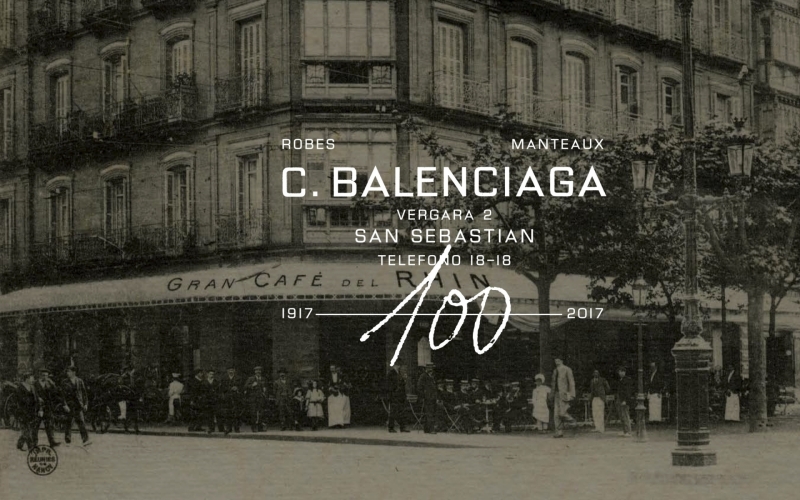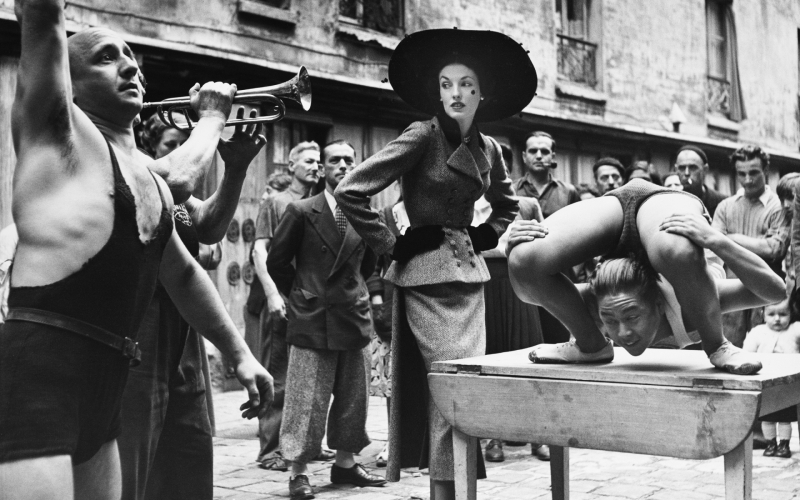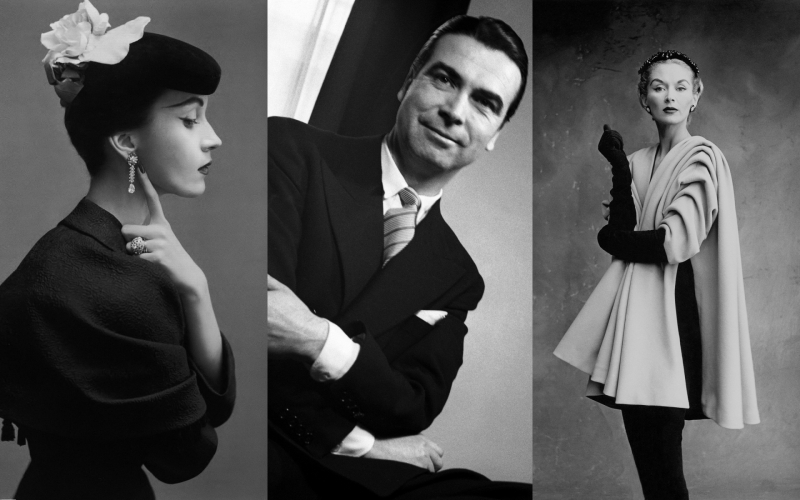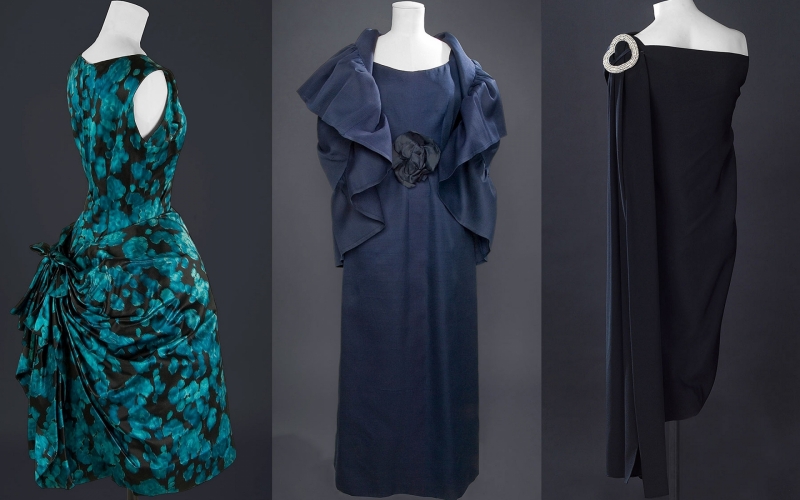Fine Art for Interior Design

Iconic even to icons, his peers called him the Master, the King, and the one' true couturier' in a sea of fashion designers. Clients braved the perils of World War II for a fitting, and France acknowledged his accomplishments with the Legion d'Honneur. He was a recluse who preferred privacy to adulation while revolutionizing the female silhouette in the 20th Century, whose clothes molded to the body even as they gave it new form, and insisted upon poise while seeking always to allow freedom of movement. He was Balenciaga, son of a Basque mariner, who from an early age learned his craft at his mother's side and found spirit from his father's ethos, which ultimately gave birth to the business adventure of Cristóbal Balenciaga. A journey that would lead him to Paris, fame, and a career celebrated in 2017 with the 100th Anniversary opening of his original fashion house in San Sebastián.
Iconic even to icons, his peers called him the Master, the King, and the one' true couturier' in a sea of fashion designers. Clients braved the perils of World War II for a fitting, and France... Read More

No mere fisherman, Balenciaga’s father was mayor of his town and captain of a customs surveillance boat that doubled as a summertime ferry for the Royal Spanish Family and their guests. While his seamstress mother mended their clothes, young Cristobal was granted a closer look at both the exquisite craftsmanship and the women who wore it, inspiring a passion for haute couture that led to an apprenticeship at the tender age of twelve. It was the beginning of an arduous journey that exemplified both his work ethic and his talent, as well as an astute sense of business that saw him reinvent his brand as times demanded. By the time he fled Spain at the onset of the Civil War, his clientele included wealthy members of society and the Spanish royal family, while his business counted no less than three strategically placed boutiques named for his mother, Eisa.
No mere fisherman, Balenciaga’s father was mayor of his town and captain of a customs surveillance boat that doubled as a summertime ferry for the Royal Spanish Family and their guests. While his... Read More

But it was in Paris that he would become the Architect, the premiere couture designer of the century. It was also where he met the love of his life, Franco-Russian milliner Vladzio Zawrorowski d’Attainville. The opening of his house Balenciaga in 1937 was a resounding success, a triumph grounded in his love of family and craft. An intensely private man, never seen at shows, he preferred not to ‘waste himself on society’ or attempt to explain his métier, and gave only one full interview in his lifetime, leading to his existence being questioned by journalists who thought his name a front for a collective. Devastated by the death of Vladzio in 1948, Balenciaga almost vanished in full, briefly considering closing up his design house. Fortunately for couture, he persevered, and the ’50s and ’60s would see him embark upon what is thought to be his most innovative and inspired years.
But it was in Paris that he would become the Architect, the premiere couture designer of the century. It was also where he met the love of his life, Franco-Russian milliner Vladzio Zawrorowski... Read More

Christian Dior stated that "haute couture is like an orchestra whose conductor is Cristobal Balenciaga." If so, Balenciaga conducted from a distance and for his own pleasure. His voice was said to be gentle, 'like feathers,' and his establishment quiet and monastic in nature. His purported joie de vivre was perhaps better expressed through his designs, though his clothes were famously masterpieces of simplicity, grace, and structural perfection, exemplifying his creed, "Elegance is Elimination." Challenging accepted standards for women's wear, the fifties saw Balenciaga introducing the balloon jacket, baby doll dress, cocoon coat, and sack dress, all extraordinary for their refusal to adhere to the usual hourglass silhouette afforded women. The sixties were embodied in Balenciaga's bold materials and designs of unequaled fluidity and technical mastery, even as he developed silk gazar, a stiffer material that allowed the near architectural designs for which he would become famous.
Christian Dior stated that "haute couture is like an orchestra whose conductor is Cristobal Balenciaga." If so, Balenciaga conducted from a distance and for his own pleasure. His voice was said to be... Read More

With a clientele of royalty, born or perceived, Balenciaga catered to the rarefied elite yet never abandoned his roots. His Spanish house Eisa sold outfits at half the price; his often mature models, known as ‘monsters’ for their ordinariness, reflected the true nature of his patrons. His cut was imminent, thoughtful, designed to make the ordinary woman extraordinary. His ability to design, cut, and fit, unheard of. Born a peasant, he became an erudite King, finding inspiration in art history. He stood quietly apart, favoring black toiles to the accepted écru and never naming a collection. His business was his art, his designs revolutionary, yet he closed his house in 1968 in the onslaught of ready-to-wear collections, finally refusing to bow to the times as purists bowed to him. His clients went into mourning then, and again at his death in 1972, declaring the King was dead, and with him, the Premiere Couture Designer of the 20th Century.
With a clientele of royalty, born or perceived, Balenciaga catered to the rarefied elite yet never abandoned his roots. His Spanish house Eisa sold outfits at half the price; his often mature models,... Read More
Watch Video: Cristobal Balenciaga...Reflections on the Premier Couture Designer of the 20th Century
Watch Video: Cristobal Balenciaga...Reflections on the Premier Couture Designer of the 20th Century
.jpg)
.jpg)
.jpg)
.jpg)
.jpg)
La Belle Epoque was built in 1930 as a barge boat used for carrying timber from Burgundy to Paris...
The restaurant of chef Quique Dacosta, which he named after himself, is located in the city of...
Right in the heart of French Commune Saint-Bon-Tarentaise lies Courchevel 1850, a world-renowned...
Whisper the term "Bespoke tailoring." The words conjure images of Victorian-era British luxury,...
Cristobal Balenciaga...Reflections on the Premier...By: Susannah Cord / Photographs Courtesy of Balenciaga Museum |

|
|
Iconic even to icons, his peers called him the Master, the King, and the one\' true couturier\' in a sea of fashion designers. Clients braved the perils of World War II for a fitting, and France acknowledged his accomplishments with the Legion d\'Honneur. He was a recluse who preferred privacy to adulation while revolutionizing the female silhouette in the 20th Century, whose clothes molded to the body even as they gave it new form, and insisted upon poise while seeking always to allow freedom of movement. He was Balenciaga, son of a Basque mariner, who from an early age learned his craft at his mother\'s side and found spirit from his father\'s ethos, which ultimately gave birth to the business adventure of Cristóbal Balenciaga. A journey that would lead him to Paris, fame, and a career celebrated in 2017 with the 100th Anniversary opening of his original fashion house in San Sebastián. |

|
|
No mere fisherman, Balenciaga’s father was mayor of his town and captain of a customs surveillance boat that doubled as a summertime ferry for the Royal Spanish Family and their guests. While his seamstress mother mended their clothes, young Cristobal was granted a closer look at both the exquisite craftsmanship and the women who wore it, inspiring a passion for haute couture that led to an apprenticeship at the tender age of twelve. It was the beginning of an arduous journey that exemplified both his work ethic and his talent, as well as an astute sense of business that saw him reinvent his brand as times demanded. By the time he fled Spain at the onset of the Civil War, his clientele included wealthy members of society and the Spanish royal family, while his business counted no less than three strategically placed boutiques named for his mother, Eisa. |

|
|
But it was in Paris that he would become the Architect, the premiere couture designer of the century. It was also where he met the love of his life, Franco-Russian milliner Vladzio Zawrorowski d’Attainville. The opening of his house Balenciaga in 1937 was a resounding success, a triumph grounded in his love of family and craft. An intensely private man, never seen at shows, he preferred not to ‘waste himself on society’ or attempt to explain his métier, and gave only one full interview in his lifetime, leading to his existence being questioned by journalists who thought his name a front for a collective. Devastated by the death of Vladzio in 1948, Balenciaga almost vanished in full, briefly considering closing up his design house. Fortunately for couture, he persevered, and the ’50s and ’60s would see him embark upon what is thought to be his most innovative and inspired years. |

|
|
Christian Dior stated that \"haute couture is like an orchestra whose conductor is Cristobal Balenciaga.\" If so, Balenciaga conducted from a distance and for his own pleasure. His voice was said to be gentle, \'like feathers,\' and his establishment quiet and monastic in nature. His purported joie de vivre was perhaps better expressed through his designs, though his clothes were famously masterpieces of simplicity, grace, and structural perfection, exemplifying his creed, \"Elegance is Elimination.\" Challenging accepted standards for women\'s wear, the fifties saw Balenciaga introducing the balloon jacket, baby doll dress, cocoon coat, and sack dress, all extraordinary for their refusal to adhere to the usual hourglass silhouette afforded women. The sixties were embodied in Balenciaga\'s bold materials and designs of unequaled fluidity and technical mastery, even as he developed silk gazar, a stiffer material that allowed the near architectural designs for which he would become famous. |

|
|
With a clientele of royalty, born or perceived, Balenciaga catered to the rarefied elite yet never abandoned his roots. His Spanish house Eisa sold outfits at half the price; his often mature models, known as ‘monsters’ for their ordinariness, reflected the true nature of his patrons. His cut was imminent, thoughtful, designed to make the ordinary woman extraordinary. His ability to design, cut, and fit, unheard of. Born a peasant, he became an erudite King, finding inspiration in art history. He stood quietly apart, favoring black toiles to the accepted écru and never naming a collection. His business was his art, his designs revolutionary, yet he closed his house in 1968 in the onslaught of ready-to-wear collections, finally refusing to bow to the times as purists bowed to him. His clients went into mourning then, and again at his death in 1972, declaring the King was dead, and with him, the Premiere Couture Designer of the 20th Century. |

|
|
Watch Video: Cristobal Balenciaga...Reflections on the Premier Couture Designer of the 20th Century |